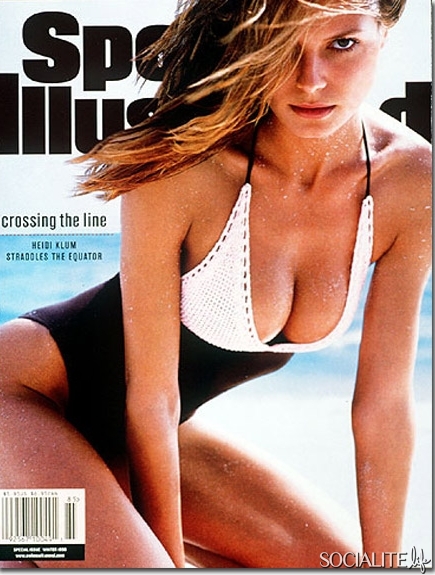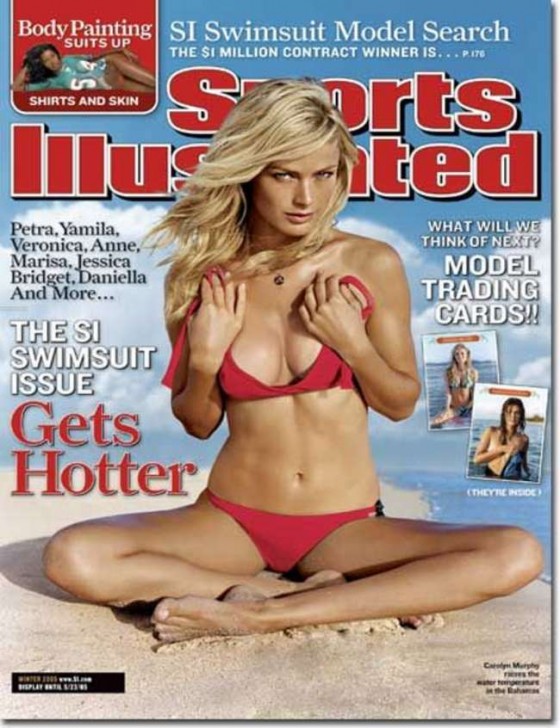| In the image on the right, the model is supposed
to be advertising a yellow swimsuit to the viewer. Conversely, it could be completely
misunderstood by the viewer to decode a totally different message by this cover
photograph. The model is wearing a yellow swimsuit but has taken off the top of her
bikini. By doing this the model is taking the viewer's attention away from the
product, in this case a yellow swimsuit, and making the viewer focus on her as she is
undressing the top of her bikini. The model looks stunning and, "common themes
include: If you buy and use the product, you'll become more sexually attractive, have
more sex, have better sex, or just feel sexier for your own sake (Reichert 7)." The
model has a playful smile across her face as if she is enjoying teasing the viewer;
the facial expressions are acting in a way of being very flirtatious and trying to
grab the viewer's attention. Not only does the playful facial expression capture the
audience's attention, so does the fact that she is covering up her breasts with one
arm as it comes across her body and the other hand is rested upon her neck. This pose
by the beautiful model is implanting a sense of scopophilia in the viewers for women
but mostly men. Not only does the model implant a sense of scopophilia in the viewers
but also sets the stage for hegemony. Hegemony is a sort of power, maintained by
culturally constitutes norms (Rose 268). This model is a norm in our society, because
her body, the legs, the skin, the curves, is set to be the norm in our society. Davis'
"combined analysis of the Sports Illustrated swimsuit issue with interviews of
both producers and consumers to show how ideas about hegemonic masculinity are
generated and reinforced (Wenner 52)." |
 |



